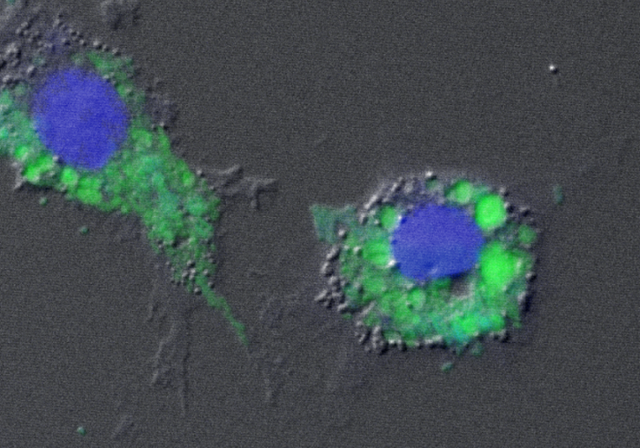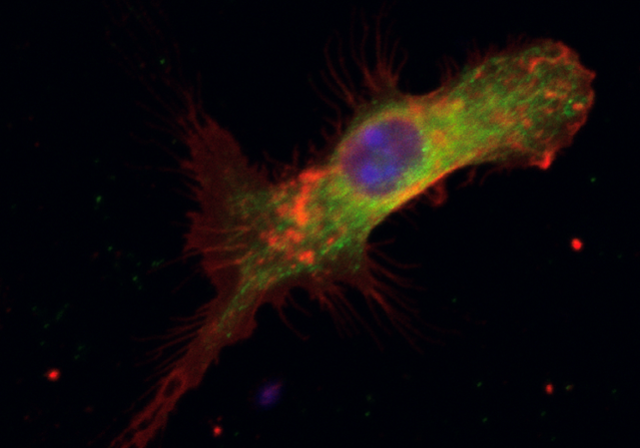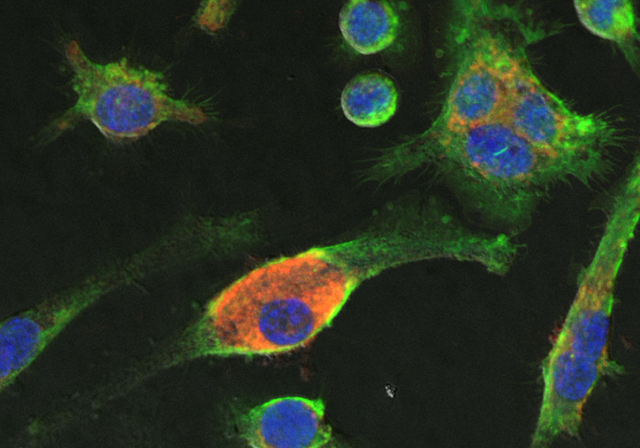Contact Information
Biography
John A. Pollock, Ph.D. (Biophysics) is a Full Professor of Biology and the Lambert F. Minucci Endowed Chair in Engineering & Computational Sciences. He serves as Co-Director of the Chronic Pain Research Consortium and the Director of the Partnership in Education. He is an elected Fellow of American Association for the Advancement of Science (AAAS), named an Apple Distinguished Educator and recipient of two Emmy Awards for broadcast television. He currently teaches neuroscience. His research explores the development and functions of the nervous system with a focus on the changes in gene expression associated with pain and nanotherapeutic pain-relief which is different for males and females. As Director of the Partnership in Education, he produces digital and analog learning resources for STEM education including YouTube videos, award winning Apps, games, and teacher resources for K-12, museums and the public. Dr. Pollock has mentored over 200 students including pre-college scholars working in his laboratory and STEM ed studio, 7 M.S. (Biomedical Engineering) and 11 Ph.D. scholars in biology, two M.F.A. students and an Ed.D. scholar in education.
Education
- Ph.D., Biophysics, Syracuse University
- M.S., Physics, Syracuse University
- B.S., Physics, Syracuse University
Research Interests
Research interests include the fundamental biology of pain and pain-relief and the underlying mechanisms that are distinct between males and females. Relevant biological questions are explored using an immunomodulatory NSAID based nanotherapeutic developed by our colleague in Duquesne University School of Pharmacy, Dr. Jelena Janjic. Primary research techniques include animal behavior, microscopy and bioinformatic molecular cell biology. The second principle interest is focused on K-12 and the general public and raising awareness of science and health through digital and analog interactive games and media. Critical evaluation demonstrates effectiveness, with published results. Emphasis is currently focused on understanding the neurobiology and physiology of stress and anxiety as a way to also learn how to manage one's own mental health. Approaches include table-top games, YouTube videos, iOS/Android apps, ebooks, web-based resources with supporting teacher's guides and aligned curriculum.



Confocal microscope images of fluorecently labeled mammalian cells taken by undergraduate biology students in Dr. Pollock's lab
Profile Information
About Dr. Pollock
Please find a compilation of selected publications, awards, course offerings, and additional information regarding Dr. John Pollock and The Partnership in Education.
- Presidential Award for Excellence in Science, Mathematics and Engineering Mentoring
- Two-time Emmy Award® for Scientastic! “ARE YOU SLEEPING?”
- Elected Fellow of the American Association for the Advancement of Science (AAAS)
- Pollock JA, Kantorski B. Weathering the Storm: Youth Vulnerability and Resilience during the Climate Crisis. NJP Climate Action (Nature Portfolio), 4, 82 (2025)
- Kantorski B, Bruzdewicz K, Fedje K, Bass KM, Pollock JA. Adolescents’ knowledge of and confidence in vaccines improves with board game play. Discover Education (Nature Portfolio), 4.245 (2025)
- Kantorski B, Bruzdewicz K, Will S, Pollock JA. Cards, Cubes, and Collaboration: A case study of the development of an educational board game. Discover Education (Nature Portfolio), 4.1 (2025): 79. PubMed PMID: 40191832
- Pollock JA. Telling the stories of neuroscientific discovery to schoolchildren and the public can make an impact. eNeuro, 9 April 2024, 11(4): ENEURO.0078-24.2024. PubMed PMID: 38594072
- Kantorski B, Sanford-Dolly CW, Commisso DR, Pollock JA. Backward design as a mobile application development strategy. Ed Tech Research and Development. 2019;67:711–731. PubMed PMID: 31148910
- Deal B, Phillips K, Crelli C, Janjic JM, Pollock JA. RNA-Seq Reveals Sex Differences in Gene Expression during Peripheral Neuropathic Inflammation and in Pain Relief from a COX-2 Inhibiting Theranostic Nanoemulsion. International Journal of Molecular Sciences. 2023; 24:9163. PubMed PMID: 37298117
- Deal B, Reynolds LM, Patterson C, Janjic JM, Pollock JA. Behavioral and inflammatory sex differences revealed by celecoxib nanotherapeutic treatment of peripheral neuroinflammation. Scientific Reports (Nature Portfolio). 2022;12:8472. PubMed PMID: 35637203
- Stevens AM, Liu L, Bertovich D, Janjic JM, Pollock JA. Differential Expression of Neuroinflammatory mRNAs in the Rat Sciatic Nerve Following Chronic Constriction Injury and Pain-Relieving Nanoemulsion NSAID Delivery to Infiltrating Macrophages. International Journal of Molecular Sciences. 2019;20(21):5269. PubMed PMID: 31652890
- Saleem M, Deal B, Nehl E, Janjic JM, Pollock JA. Nanomedicine-driven neuropathic pain relief in a rat model is associated with macrophage
polarity and mast cell activation. Acta Neuropathologica Communications. 2019;7(1):108. PubMed PMID: 31277709
[Video Abstract: doi:10.21203/rs.2.15594/v1] - Janjic JM, Vasudeva K, Saleem M, Stevens A, Liu L, Patel S, Pollock JA. Low-dose NSAIDs reduce pain via macrophage targeted nanoemulsion delivery to neuroinflammation of the sciatic nerve in rat. Journal of Neuroimmunology. 2018;318:72–79. PubMed PMID: 29519721
- Vasudeva K, Vodovotz Y, Azhar N, Barclay D, Janjic JM, Pollock JA. In vivo and systems biology studies implicate IL-18 as a central mediator in chronic pain. Journal of Neuroimmunology. 2015;283:43–49. PubMed PMID: 26004155
- Vasudeva K, Andersen K, Zeyzus-Johns B, Hitchens TK, Patel SK, Balducci A, Janjic JM, Pollock JA. Imaging neuroinflammation in vivo in a neuropathic pain rat model with near-infrared fluorescence and ¹⁹F magnetic resonance. PLoS One. 2014;9(2):e90589. PubMed PMID: 24587398
- BIOL 475/575 Neurobiology
- BIOL 376/576 Capstone VI: Microscopy
-
The Grable Foundation
Game, Set, Match! Connecting students and teachers to community-relevant STEM topics
P.I. J. A. Pollock -
NIH-NIGMS R25 SEPA
Partnership for Prevention: A plan for student stress, anxiety, and pain through interactive media
P.I. J. A. Pollock -
Charles Henry Leach II Fund
Mapping the Molecular Cell Biology of Pain in Females and Males
P.I. J. A. Pollock -
Department of Defense, Defense Medical Research and Development Program & CDMRP Restoring Warfighters Award
Long-Acting Nonopioid Analgesic (LANA) Nanomedicine for Rapid, Single-Dose Sustained Pain Control and Rehabilitation Support After Neuromusculoskeletal Injury
P.I. J. M. Janjic & Co-PI J. A. Pollock


